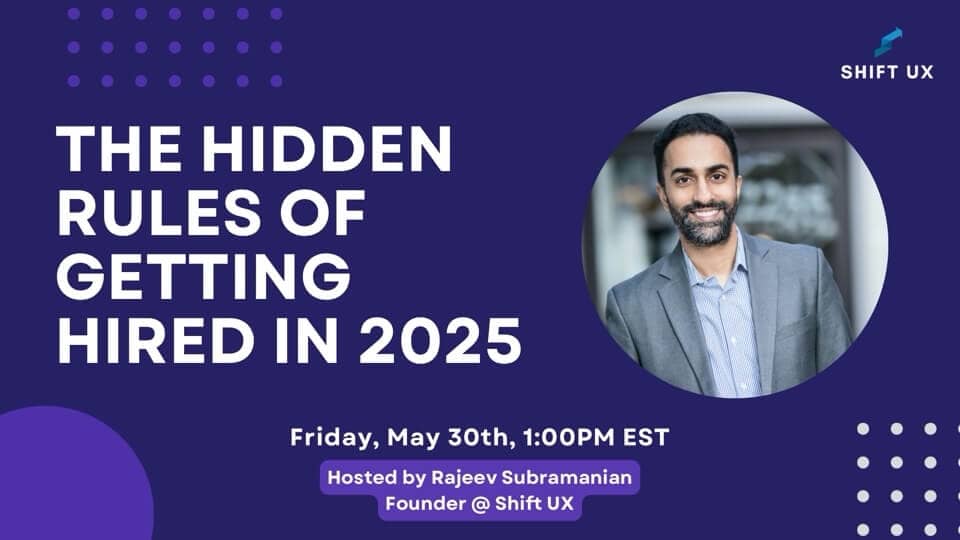|
Play of the Week newsletter by Chris
|
Newsletter issue: #153
Read time: 1m 31s
|
A big thank you to Shift UX, our sponsor, who keeps this newsletter free to the reader:

FREE WEBINAR
Stuck in the UX Job Hunt Grind?
FREE 2-hour webinar to master strategies for landing a UX job in 2025.
Register today! 👇
|
|
|
|
The biggest lie in portfolios:
“My redesign increased conversions by 137%!”
Yeah, and my abs increased attractiveness by 246%. Both equally made up.
Most of us don’t have sexy metrics to show off. Most of us find it hard to correlate our designs with revenue.
Maybe you work at an agency where metrics isn’t part of the deal. Or your company just… suck at tracking that stuff.
But you still need to prove your worth in interviews.
So here’s how to flex without the referring to $$$ (or the “I’m not bullshitting” metrics):
“8 out of 10 users completed the task in half the time”.
↳ That’s not made-up—that’s observable proof! Time saved = money saved.
“The design system reduced development time by 40% for new features.”
↳ Translation: I made your expensive engineers more productive. Ka-ching!
After your navigation redesign, support tickets about “can’t find X” dropped by 30%.
↳ You: “So I basically gave your support team a 30% raise in efficiency.”
↳ Them: [throws money at you]
Not all impact is measured by a dollar amount. Sometimes the good stuff hides in these little gems:
- Reduced error rates
- Faster time-to-market
- Decreased bounce rates
- Increased team efficiency
- More positive user feedback
- Higher user satisfaction scores
These might not make the CEO dance on tables, but they absolutely matter to the business.
Hiring managers want to see you connect your design to business goals.
❌ “I redesigned the checkout flow”
✅ “I streamlined checkout to reduce cart abandonment and support tickets”
❌ “I created a new design system”
✅ “I built components that cut development time by 40% & ensured brand consistency”
See the difference?
One is “I did a thing.” The other is “I did a thing THAT HELPED THE BUSINESS.”
Companies don’t hire designers who make pretty things. They hire designers who make money (or save it).
So next time you’re working on something, even without direct revenue tracking, look for these business signals.
They’re everywhere once you start looking for them.
Track them. Own them. Flaunt them in your portfolio.
And remember—sometimes saving money is sexier than making it. Just ask my accountant 😉
Ryan Scott (Ex-Airbnb, DoorDash, Palantir) and I spoke about How to Sell The ROI of Design. Watch the livestream (below) where he shows you how to sell your ideas, your designs and importantly, your design impact!